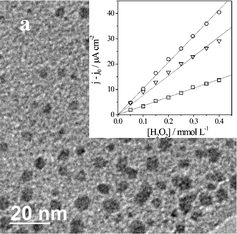Synthesis, characterization and immobilization of Prussian blue nanoparticles. A potential tool for biosensing devices†
Abstract
Prussian blue (PB) particles with the size of ca. 5 nm were synthesized and immobilized in a multilayer structure, as a strategy for the potential development of an amperometric transducer for oxidase-enzyme-based biosensors. Multilayer films composed of PB and poly(allylamine hydrochloride) (PAH) were prepared via layer-by-layer (


 Please wait while we load your content...
Please wait while we load your content...